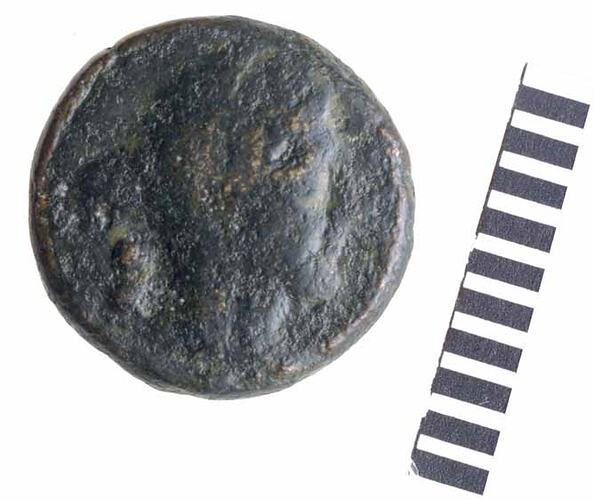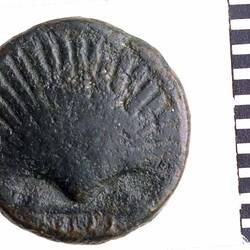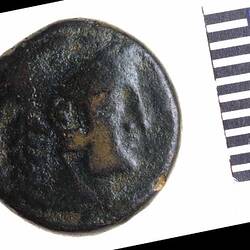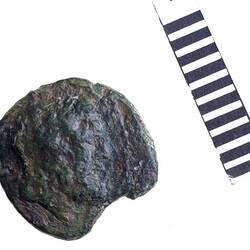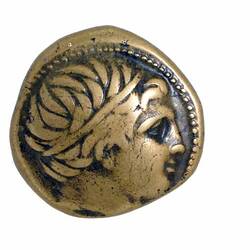Summary
Sextans issued by City of Luceria, Apulia, Italy, Ancient Greek States, circa 210 BC
Minted by Luceria
Obverse Description
Head of the Greek goddess Dione facing right laureate and wearing a viel. Behind, two dots (representing the denomination Sextans)
Reverse Description
A scallop shell with hinge down (BM catalogue calls it a cockle shell) in exergue (largely off the flan only the tops of letters can be seen) LVCERI
Edge Description
Plain
Significance
The obverse of the coin depicts the Greek goddess Dione who was the mother of Aphrodite in Homer's Illiad (Book V). The reverse depicts a scallop or cockle shell, an image traditionally employed on coins of the sextans denomination by Luceria (see BMC 14 and 43 ). Luceria was a Latin Colony of Rome from about 315 BC. A mint was established in the city during the Second Punic War (218-201 BC) initially casting aes grave pieces on the Roman libral standard. The economic impact of the war with Hannibal saw the amount of copper in the coins decrease and eventually a switch from casting to striking technology. This coin is struck with local designs, suggesting local circulation, the mint also struck coins with standard Roman types for wider circulation. It's copper content was on the sextantal standard, though to have been adopted in 211 BC.
More Information
-
Collection Names
-
Collecting Areas
-
Acquisition Information
Transfer from National Gallery of Victoria (NGV), 15 Mar 1976
-
Date Issued
circa 200 BC
-
Issued By
-
Previous Collection
Eugene von Guerard, Melbourne, Greater Melbourne, Victoria, Australia, pre 1880
Listed in Eugene von Guerard's catalogue, vol.1, p.7. Purchased from Mr Friedlander of Berlin for 6 shillings, pre 1880. -
Denomination
-
Material
Copper
-
Axis
3
-
Classification
-
Category
-
Discipline
-
Type of item
-
Dimensions
18 mm (Outside Diameter), 6.356 g (Weight)
-
Shape
Round
-
References
BMC. Italy p. 141 no.61 SNG Corpus Christi Part 1 No.106 SNG ANS Part 1 No708
[Book] Poole, Reginald S. 1873. A Catalogue of the Greek Coins in the British Museum, Italy.
[Book] Crawford, Michael H. 1974. Roman Republican Coinage., 183, 596 Pages
[Book] Crawford, Michael H. 1985. Coinage & Money under the Roman Republic., 65 Pages
[Catalogue] Pullin, Ruth. 2011. Nature Revealed: Eugene von Guerard.
-
Keywords
